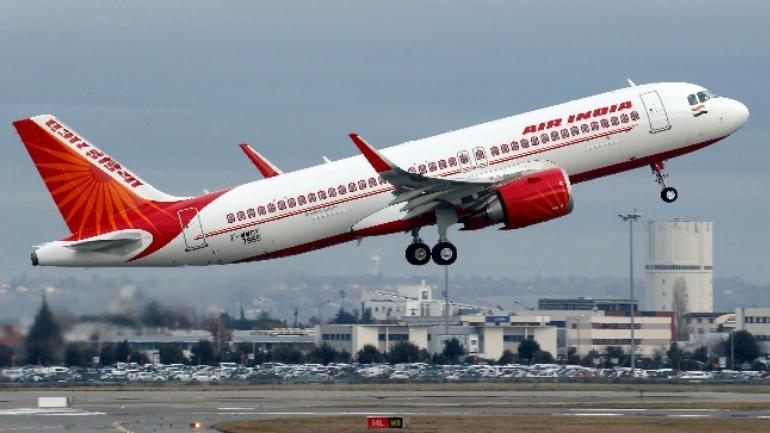Modi Govt Ready to Invite Bids — Once Again — For Air India Sale

New Delhi: Once again, the Narendra Modi government, now in its second term, is set to officially invite bids from private players to buy the indebted “national” carrier, Air India, by issuing the Expression of Interest (EOI) document — which last year had failed to attract even a single bidder.
Of course, since the debacle last year, the government has tried to make the sale more attractive by now offering 100% stake in Air India — against the 76% stake that was on offer last time.
The earlier offer-bundle included 100% stake in AI’s subsidiary, Air India Express Limited, and the government’s 50% equity stake in Air India SATS Airport Services, a joint venture between AI and Singapore’s SATS Limited. Now, these and other subsidiaries will be taken care of separately.
Also read: Air India Sale: How To Systematically Kill A Public-Sector Company
According to news reports, the government is set to issue the EOIs by the end of this month, or by the first week of November — so that the sale process can be completed within this fiscal itself.
In fact, the Modi-led Bharatiya Janata Party Government 2.0 has been working overtime to clear the aisle for selling off a bunch of public sector undertakings (PSUs), most of them healthy and profitable — as it rushes to meet the disinvestment target of Rs 1,05,000 crore (Rs 1.05 trillion).
On September 30, the government cleared “strategic sales” in Bharat Petroleum Corporation Limited (BPCL), BEML Limited (previously Bharat Earth Movers Limited), Container Corporation of India (Concor), Shipping Corporation of India (SCI), THDC India (formerly Tehri Hydro Development Corporation Limited) and North Eastern Electric Power Corporation Limited (NEEPCO). The last two, THDC and NEEPCO, could be taken over by state-run NTPC.
As for this second attempt to sell off Air India, one news report said that before issuing the EOIs, the government was planning to meet with potential buyers, such as Tata Group and InterGlobe Aviation, which already run airlines as well as other interested corporates.
There has also been speculation that the government might review the rules that currently do not permit 100% ownership of Indian airline companies by foreign companies.
The major deterrent last year was the massive debt burden of Air India — which was forced to take on debt under the deliberately destructive policies beginning in 2004 that were adopted by the earlier Congress-led United Progressive Alliance governments.
These destructive decisions included getting AI to unnecessarily buy an excessive number of aircraft (nearly half of AI’s debt burden was on account of these purchases), merging Air India with domestic state-owned carrier Indian Airlines (both market leaders at the time), and giving away the highly lucrative Gulf routes as well as other profitable routes to private airlines.
When the government had announced the sale of AI last year on March 28, the airline had a debt burden of around Rs 52,000 crore.
Also read: The Air India Sale Fiasco is the Strongest Case for Why It Must Not Be Sold
As of March 31 this year, Air India’s total debt stood at Rs 58,351 crore, as Civil Aviation minister Hardeep Singh Puri informed the Rajya Sabha.
Last year itself — in order to sweeten the deal for the potential buyer — the Modi government had declared that it would bear 50% of the debt. The government had announced it would hive off non-core real estate assets and other businesses into a Special Purpose Vehicle (SPV) and transfer half the debt to it.
Indeed, the government in February established an SPV by the name of Air India Assets Holding Ltd (AIAHL) and transferred to take care of the debt, and the SPV raised Rs 7,000 crore through a bond sale last month to refinance its debt.
But as the Modi government pushes ahead with the process of privatising Air India, it is worth remembering that the strongest argument for retaining the airline in the public sector is that it will lead to the monopoly of private airlines in India’s air travel market as no other state-owned airline would be left in the country. It will become next to impossible to keep a check on prices, quality of service, etc.
More importantly, since private airlines operate with the sole aim of maximising profit, who will take care of the loss-making and/or remote routes in the country, routes that are serviced only by government airlines?
It would not be too difficult to turn around Air India back to profitability, as the employees’ union and experts have stated in the past, with a little support from the government, the way it is supporting the private sector. For instance, if the government reduced the debt burden on AI the way it is doing now in the interest of the private buyers.
Also read: Air India Sell-Off: Offloading 100% Stake Isn’t a Good Idea
Recently, after the disappearance of Jet Airways from the skies, there was a golden opportunity for the government to help restore the fortunes of Air India. However, while all major private airlines benefitted, Air India did not.
In the final analysis, if (and when) Air India is sold off, the biggest losers in one of the world’s fastest-growing air travel markets would be the air-travelling citizens.
Get the latest reports & analysis with people's perspective on Protests, movements & deep analytical videos, discussions of the current affairs in your Telegram app. Subscribe to NewsClick's Telegram channel & get Real-Time updates on stories, as they get published on our website.
























